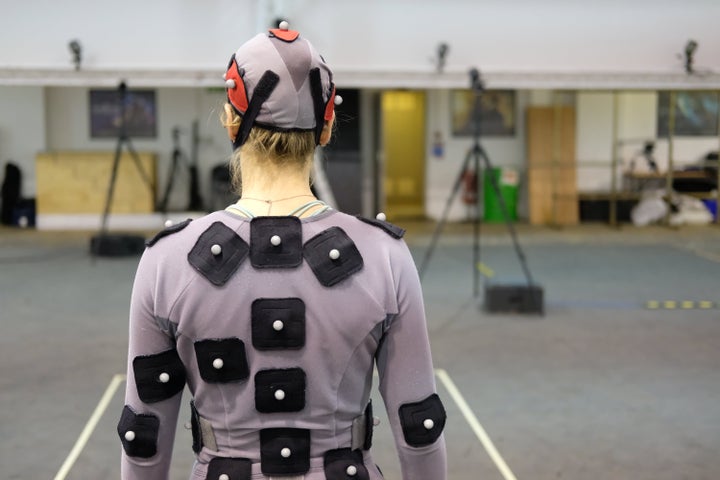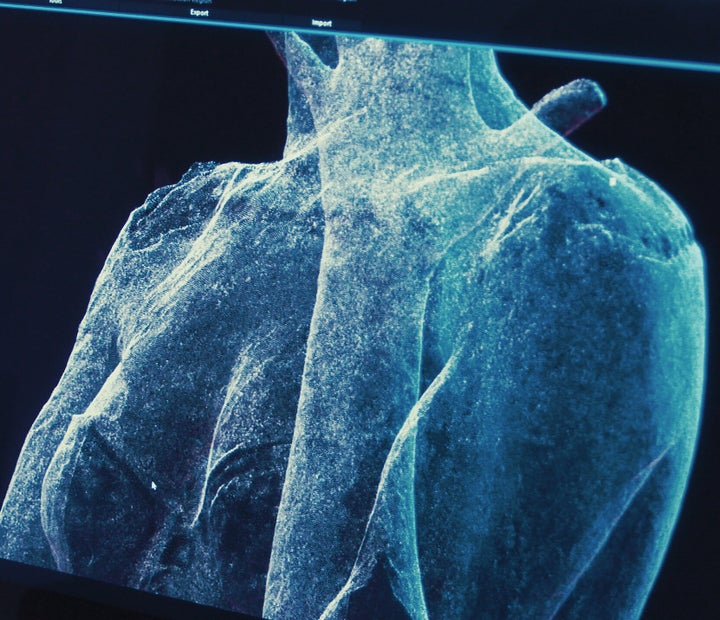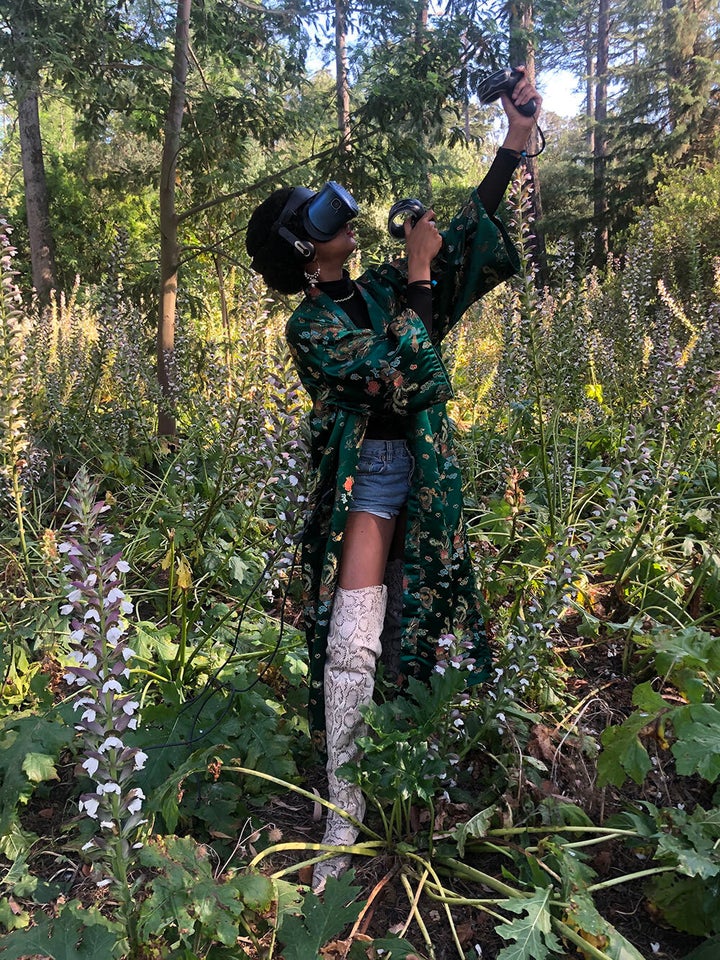The fashion industry’s reckoning has arrived. With concerns surrounding waste, ethical treatment of workers and inclusivity, there’s a widespread feeling that the status quo and systems in place are no longer sustainable.
Our current pandemic has not only highlighted and exacerbated how quickly fashion brands have needed to pivot to stay relevant and desirable, but it’s also changed people’s mindsets about how they shop and the clothing they really need.
With stores closed, parties and events cancelled and brands forced to rethink everything from how they re-open safely in a post-Covid-19 world to how they present their new-season fashion-wares, designers and customers are starting to appreciate how immersive technologies can build a bridge between the physical and digital spaces, connecting brands with customers, unleashing unprecedented creativity and helping to solve some of fashion’s biggest issues, like waste.
“The industry for a long time has presented itself as an early adopter of technologies, when that couldn’t be further from the truth,” Matthew Drinkwater, head of London College of Fashion’s Innovation Agency (FIA), tells us. FIA is a creative consultancy based at LCF specialising in using emerging technologies to help designers, retailers and brands change the way they make, show and sell their collections. “The use of immersive technology is really in its infancy for fashion.”

You may have played around with some of the different ways that designers and brands have been dipping their toes into virtual reality, augmented reality and mixed-realities, whether you’ve downloaded an AR trainer app before purchasing a new pair of kicks, played a gamified fashion app like Drest to style digital avatars in luxury goods or enjoyed “phygital” experiences which merge physical and digital retail experiences. Perhaps you’ve even enjoyed checking out the latest Valentino and Marc Jacobs looks in the game Animal Crossing: New Horizons?
These technologies are ever more essential in a world where, for the foreseeable at least, we won’t be using physical changing rooms in shops or handling product as we once did.
For Matthew, much of what we’re seeing right now with the adoption of immersive technologies in fashion is forced behavioural change: when stores can’t open, when you can’t hold a physical fashion show, you need to explore other alternatives - it’s why LFW designers went digital and Chanel’s Virginie Viard presented the brand’s Cruise collection virtually in June 2020.
“What can the creation of digital content offer to the fashion industry? Even three or four months ago when I was speaking about this there would be a sceptical response. There is now this realisation that there is going to be a need alongside the physical product to have some sort of digital interaction,” explains Matthew.
If you’ve felt those recent virtual fashion experiences were lacking somewhat - reviews have been mixed - perhaps it’s because the immense creative potential that fashion without limits can offer in the virtual universe hasn’t been explored yet.
“Brands and designers need to figure out how to completely redefine that physical experience in a virtual world. Many think you need to take the current format and drop it into a virtual world, but you can build something entirely different in how you communicate. It’s a shift from storytelling to story living - you will actively be a part of this experience,” says Matthew.

On July 29, RYOT, Verizon Media’s in-house creative Studio, presents: The Fabric of Reality, an immersive virtual fashion show experience unlike anything you’ve ever seen before, featuring conscious and tech-fluent designers Sabinna, Charli Cohen and Damara.
These visionary fashion creatives will be working in collaboration with leading VR artists to create immersive fashion story worlds with the goal of blowing your mind and creating an experience you would never be able to encounter in the physical realm.
Viewers will be able to virtually wear and interact with the garments in the story worlds for a 360-degree experience, completely changing the concept of the fashion show as we know it.
On June 25, Matthew Drinkwater, Sam Field, Head of Creative Tech at RYOT, Damara, Sabinna and Charli Cohen were part of a virtual panel discussion with Vogue Business’ Maghan McDowell on the virtual future of fashion.
The discussion had an audience of over 200 people, and touched on everything from how digital fashion showcases will look in the future to how we have the potential to create entirely new experiences through immersive technologies, rather than just mimicking what we already know.
Matthew talked about the huge amount of fear fashion industry professionals have when it comes to experimenting with immersive technologies: fear of failure, fear of cost, fear of being the first to try something. There is also a sense of uncertainty because the skill-sets needed for brands, designers and retailers to succeed in a virtual realm aren’t the skills you traditionally see within the fashion industry.
“People are talking about Paris Fashion Week going ahead and are hoping it can all go back to normal, but in reality travel won’t be back to normal, audience numbers will be limited.
“If we mix the physical with digital content, there’s an opportunity for jaw-dropping, amazing moments shared across multiple platforms. There are so many opportunities for brands to experiment and communicate differently,” Matthew said during the discussion. From matters of scale to the number of audience members that can be reached through immersive experiences, the possibilities are huge.
As well as showing a new world to shoppers, these technologies will broaden the scope of what’s possible for creators, giving them a chance to push the boundaries of their creativity and communicate their brand identity even more clearly.
In a post-pandemic world, brands and retailers aren’t just being tasked with innovating. They will also have to cope with the harsh reality that we’re entering one of the biggest retail recessions we’ve ever seen. Drastic change is essential.
“We cannot simply exist in models that were in place six months ago. It will be the brands that continue to deliver amazing experiences across multiple platforms that will continue to drive consumer engagement,” says Matthew.
He compares the changes to come in fashion and retail with the shift in how we consume media. Being able to step into an haute couture dress with a designer in VR, while being in PJs in your living room, is just the tip of the iceberg.

During the panel session, designers Sabinna, Damara and Charli Cohen each talked about how they’ve incorporated technologies into their fashion collections, from Sabinna’s poster campaign around London which engaged customers by having them scan QR codes (her brand also creates fun, gamified experiences for customers which don’t require a massive team or budget - just a bit of out-of-the-box thinking).
Sabinna previously worked with FIA on her 2017 collection, which mixed show worlds with real ones as guests could mix and match clothes with easy hand gestures, before shopping them with a swipe using the Microsoft HoloLens.
Damara, a winner of the Kering Award for Sustainable Fashion in 2019, focused her winning project on playing around with technologies as a way to update garments, as if clothes were a piece of hardware, like a phone which can be updated and rebooted. She used AR to see how it could be used to alter the shape of a garment through time.
Charli Cohen recently participated in Snap’s Yellow Accelerator program in LA, and one of her key brand focal points relates to how new technologies can impact sustainability.
“It’s the way forward for environmental sustainability - not completely depending on the physical product. Smaller brands have more agility to implement new technologies and new integrations. It doesn’t make sense for fashion to exist in this old school vacuum,” she says. She’s got some exciting video game partnerships in the pipeline - so watch this space.
The conversation also touched on London Fashion Week’s digital iteration in June, and how the digital shift is pushing brands like Sabinna’s towards micro-communities where they interact with customers on different platforms, in different ways, and try to personalise the experience for them.
For Damara, experiencing fashion in the virtual world forces you to think afresh about clothes: you can’t empathise with how a fabric or garment might feel. Instead, your reason for purchasing the clothes might be because the colours will look great on social media, or because it’s being worn by CGI model Lil Miquela and you’re a fan of hers.
“We weren’t able to step inside it, to take viewers and audience attendees right inside that experience,” Matthew told the panel of the LFW digital showcase.
“In terms of what we could show technologically, there are things to make that more immersive and amazing. I want to feel that wow moment.” The Fabric of Reality project is beginning to move us towards these exciting emotional experiences - something Matthew strongly feels the future industry needs to be built on.
As to where fashion’s going, expect more and more to focus on the “phygital.” If brands and retailers start deploying rapidly changing dynamic environments in retail spaces, people will want to spend more and more time exploring stores and their contents.
“This is what experiential means in the future. It isn’t just going to be having a coffee in a store, it will be a lot more exciting than that,” says Matthew.
In fact, further down the line of digital fashion, there will be deployment systems for smell so we can have a completely 4D, location-based experience involving more of our senses. We’ll also start creating “fashion-related virtual memories,” according to Damara, which will move us further and further away from the physical show experience.
One other benefit we may start to reap from these immersive technologies? Damara’s vision is one of total diversity, and ever-more abstract digital avatars that don’t bring any discriminations or inequalities from the real world into the digital one.
“We can reimagine everything new. Those with the quickest access and privilege are those defining the meaning of those places. We need to have empathy for those not there yet,” she says.
Matthew told HuffPost that we’ll soon be seeing designers selling purely virtual fashion, creating garments that are never physically produced but have value in a virtual world (similar to gaming). Immersive technologies will also prove consequential for physical clothes, where we might soon be adding digital elements to everyday garments.
In addition to helping solve fashion’s waste and democratising the space - “technologies are going to offer the possibility to anyone with a computer and access to game engine technologies the ability to design virtual worlds and garments,” says Matthew - these technologies can form the basis of a wildly exciting creative revolution as new brands see opportunities for a radical rethinking of the status quo.
“We will see entirely digital fashion businesses emerge out of Covid-19. There will be a generation inspired and entirely comfortable working, consuming and interacting within the digital space. These businesses will become a very important part of what the future of fashion looks like,” says Matthew.
In addition to Damara, Charli Cohen and Sabinna, other names to watch in the digital fashion space include Dutch digital fashion brand The Fabricant, 3D fashion destination Change of Paradigm and digital artist hub for womxn, Digi-Gxl.

Ultimately, immersive technologies in the fashion world will not only bring about increased experimentation and showcase clothing without limits - they will also connect us to fashion in new ways.
As Sam Field told the panel: “I firmly believe we’re moving from a digital content world to a virtual experiences world. Immersive storytelling is a great way of engaging the audience - they remember it as if they experienced it, not as if they watched it.
The Fabric of Reality will be shown live on 29 July, 2020 at 6:30pm BST.